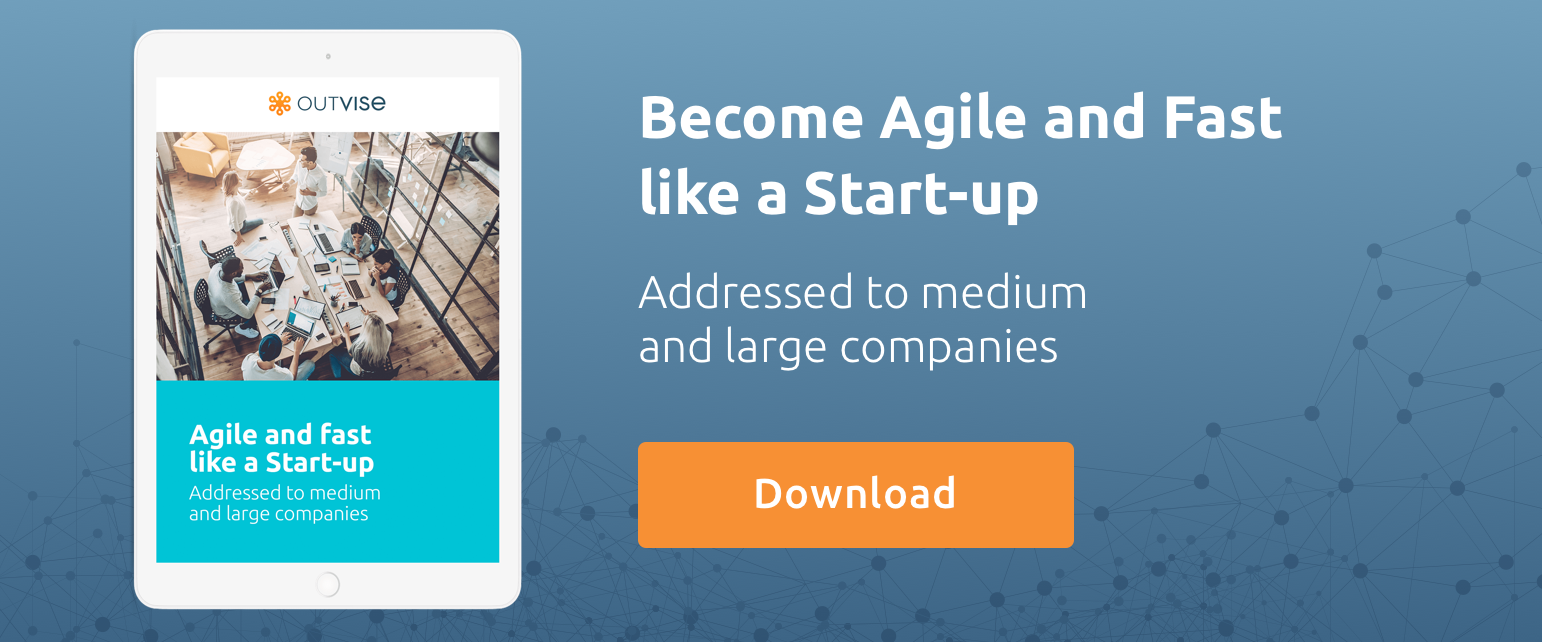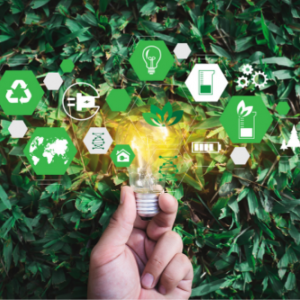The concept of a digital twin was first defined and implemented by NASA to simulate the development of spacecraft. However, it has not been since the drive towards digital transformation and the increasing prominence of tools such as IoT, cloud technology, and machine learning that the digital twin has come to the fore of supply chain optimization.
To give an idea of the growth potential of this technology, Gartner predicts that by 2021, 50% of large industrial companies will apply a digital twin in one or more of their processes, increasing their efficiency and efficacy by 10%. But what exactly constitutes a digital twin? In essence, a digital twin is a faithful reproduction of reality in the virtual world; it can be a product, a process, a factory, an organisation, or a complete value chain.
This model is generated via data. The relationships between those data are mathematically modelled to create a virtual simulation that responds to variables in a way that mirrors reality. A digital twin allows the interrelation of information that is generally siloed across organisations. These novel connections reveal the correlations and interdependencies of these processes and KPIs.
Naturally, this creates incredible value, as the organisation is able to simulate future scenarios based on the most relevant data. For instance, a report from Siemens suggested that the energy savings derived from the use of digital twins were up to 70%. Meanwhile, their productivity increased by 20%, with a time-to-market reduction of 50%.
In short, the application of digital twin technology has the potential to be a huge disruptor in all types of industries, driving productivity and becoming a fundamental part of strategies to make facilities of all kinds more efficient and productive. However, this technology has yet more potential: with the combination of digital twins and blockchain.
Table of Contents
Taking digital twin towards the productivity plateau
Looking to the future, a number of innovative firms are further developing the concept. For example, spearheaded by Israel Serrano, and Jose María Alonso and Daniel Prieto, companies such as Stelvio Tech and Norlean have joined forces to connect these two technologies. Both enterprises believe in the value of visibility: through digitalization we can improve productivity and competitiveness, while enhancing customer satisfaction and the benefits for society.
Digital twins and blockchain are already powerful tools individually, but together, they’ll provide the best of both worlds: the reliability, decentralization, and auditability of blockchain will fortify a digital twin’s treatment of data that hasn’t been available until now. This has value for industry, the consumer, and in many respects, the environment, which we’ll explain in more detail below.
However, before we elaborate, it’s interesting to reflect on how the uptake of digital twin technology has evolved. According to Gartner’s Emerging Technologies Hype Cycle from 2017, until its most recent publication in September 2020, you can see how the maturity, adoption and commercial application of digital twins has evolved at a global level. In 2017, digital twin technology was still at its launch phase; maturity stagnated in the following years, until there was a peak of high (or more specifically, oversized) expectations in 2019.
However, this year, we are entering a new epoch of digital twin technology. Amidst a renewed acceleration of digital transformation, the leap forward in digital twin technology has been enormous. It is maturing at a remarkable pace, moving towards what Gartner refers to as ‘the productivity plateau’, when its benefits are widely demonstrated and accepted. Thus, the technology becomes more stable and moves towards second and third generation versions.
Agribusiness as a use case
Therefore, it’s clear that a solution of this kind and of this maturity level is of great interest for a wide range of businesses. Let’s take a practical case, outside of the more common industrial or manufacturing examples, to illustrate how this can be applied to many business needs: agribusiness. Although not one of the usual suspects for digital twin implementation, it is still one of the more typical for the application of simulation-supported digital twins.
Let’s imagine you’re a farmer who gets up in the morning and has to manage every aspect of their farm: from accounts to crop cycling, weather patterns to machinery maintenance, there’s a whole host of interconnected nodes to oversee. Every process is subtle, difficult to predict, and profoundly co-dependent. This makes having a complete overview of your operations seem almost impossible; but with a digital twin, this needn’t be the case.
With a digital twin of your farm, you would be able to see the correlations throughout your entire value chain generated from the data you have available, whether it be farm management, geometric, or sensorization data. In turn, these data are related to external data sources such as historical prices of both inputs (water, fertilizer, etc.) and their production, or any external condition that may have an impact on the farm’s operations.
Today, powerful technology is available that can generate these relationships. Based mainly on artificial intelligence (machine learning, deep learning, etc.) and big data (albeit with greater transparency for the user), a digital twin could generate simulations in both short and long term scenarios. For instance, in the short term, it could calculate how much fertilizer you should use so that the relationship between growth and cost adapts to the requirements of the industry you’re supplying in the coming weeks.
In regard to the long term – say, what might happen five years from now – a digital twin could model various divergent outcomes. For example, if climate change reduced rains by 5% per year, you will have to factor in the extra spend on irrigation, alongside the contributions of water from the network or from a well, with its derived costs. With this information, you can calibrate the farm’s budget to account for this game-changing shift.
Combining digital twin and blockchain to make the technology more accessible
Certainly, the benefits are clear: it exploits information management systems to simplify and optimise tasks that have a significant impact on the business. However, for the vast majority of organisations – especially those of small or medium size, such as farms – these tools are out of reach. This is either due to the costs associated with developing a model adapted to the business’s specific characteristics and processes, or the technological complexity involved in implementing the tools. Equally, this barrier also has a connection to the lack of availability of specialised personnel.
However, this ability to generate future scenarios is undoubtedly invaluable; so what is the solution? How can we create digital twin technology that mitigates the cost and external expertise a project of this sort would usually demand? To meet this requirement, Stelvio Tech and Norlean have combined digital twin technology and blockchain.
Alongside this ability to generate future scenarios, Stelvio Tech and Norlean have added the capabilities of blockchain to transfer information in an agile, secure, reliable, immutable and auditable way along the value chain. As such, the digital twin/blockchain hybrid becomes an extremely powerful management system for all the actors involved, since each one can generate scenarios for the optimization of their processes with quality, reliable data.
Applying digital twin to the sustainability demand
To demonstrate the remarkable advantages of the digital twin/blockchain combination, let’s take the sustainability imperative as an example. Now, farmers are compelled to curtail their environmental impact. This demand doesn’t only come from governments and regulators; consumers are also demanding healthier, naturally-produced food, greater sustainability, and social responsibility from producers.
Thus, matching consumer demand with the necessity to modernize the agri-food sector, it is essential to transform the whole value chain to make it more efficient and sustainable. But what are the practical, actionable ways of making farming more sustainable, whilst maintaining scale and profitability? According to The Future of Food and Farming and the Cork 2.0 Declaration 2016, harnessing the potential of the bioeconomy and the circular economy could be the key to a more productive and sustainable agri-food system..
What is the value of a digital twin?
Agri-food and the bioeconomy, naturally, have an intimate relationship. Bioeconomy combines biological resources, including residues and waste, to create a circular economy: that is, the sustainable, productive waste management solutions that modern societies are demanding. Looking beyond the current extractive industrial model, a circular economy aims to redefine growth. By separating production from the consumption of finite resources, the circular economy aims to design waste out of the system.
To achieve this goal of a circular economy, it is necessary to integrate agri-food processes with bio-based operations in a single value chain. The vehicle that will facilitate this ambitious goal is a digital twin/blockchain hybrid: via the conjunction of full product traceability and the simulation and replication of the entire chain, agribusiness can optimize performance and waste management services through the analysis of data.
This monitoring of systems will prevent issues before they occur and prevent downtime. Meanwhile, associated technologies such as AI or IoT will enhance efficiency of biomass production and recycling processes, enabling these valuable by-products to be fed back into the system. We will summarise the key benefits in the following points.
Supply chain optimization via greater visibility
By improving transaction transparency through the entire supply chain for all network participants on a shared ledger, we can improve turn/velocity, faster dispute resolution/invoice reconciliation and improve On Time in Full (OTIF) and Cost of Goods Sold (COGS) ratings. This will make the entire system run faster and more efficiently, thus reducing waste and down time.
Provide full product traceability and provenance of the origin
With a blockchain/digital twin hybrid, users can enjoy unprecedented access to trusted data to support sustainability, ethical sourcing of products and attribution to their sources, by verifying authenticity. This aids in regulatory compliance and mitigates risks by predicting incidents, fraud, or other potential slip-ups. The ability to trace the source of a product in the supply chain in seconds, compared to days, allows for faster recalls, protecting brand value and increasing customer trust.
Document digitization
With technologies such as these, agribusiness and farmers can address the ineffective information sharing and intensive paperwork between parties through a digital shared distributed ledger. This will serve to reduce delays in transport, resulting in significant cost savings for all actors in the supply chain.
Enhancing the financial viability of sustainable practices
Through supply chain optimization, agribusinesses can create sustainable products with the correct correlation between effort and return. Essentially, it all boils down to saving costs; farms can make sustainable practices more strainlined, thus reaping the benefits of practices that preserve the health of the land, livestock, and ultimately, the end consumer. Equally, greater supply chain visibility allows for more effective waste management plans, promoting greater efficiency in both output and costs.
New opportunities in brand differentiation
Enhanced product traceability creates new ways for brands to differentiate themselves in an increasingly competitive market place. Conscious consumers demand transparency, and with the reliability of blockchain-powered technology, companies can prove the provenance of their product and their green, sustainable credentials. For instance, they can provide ironclad assurance that their livestock is reared on healthy feed and is free of antibiotics.
A new era of supply chain optimization in agribusiness
With blockchain technology, agribusiness can track products at every stage of the value chain. This allows for real-time visibility, generating substantial supply chain optimization. Moreover, this detailed information will be stored on a single platform, enabling other members of the value chain to share information and documentation. Looking to the future, this could include authorities, regulators, and even the end consumer.
However, it’s the digital twin capabilities that make this a truly exciting proposition. By conducting efficient process modelling, thanks to the data gathered from various processes that feed the digital twin, these mathematical models will allow enhanced decision-making. This mitigates the necessity to perform costly, time-consuming real-world tests, due to the digital twin’s enhanced simulation capabilities.
This creates incredible potential to cut losses. In current use cases, a saving of approximately 20% has been observed. In the context of agribusiness, the integration of biomass/waste management information allows for a holistic perspective of the entire process, including monitoring residual biomass and the possible alternative uses. This fosters a circular economy model, creating financial savings, enhanced productivity, and importantly, a more sustainable approach to food production.
Ingeniero y MBA con más de 25 años de experiencia internacional. Israel ha liderado las prácticas de Blockchain en Accenture y en IBM, liderando proyectos con esta tecnología y su puesta en producción como el Proyecto de Pollo Campero de Carrefour, en Nov 2018.


![[Updated] How to level up telecom sustainability](https://blog.outvise.com/wp-content/uploads/2024/01/telecom-sustainability-1-300x300.png)


No comments yet
There are no comments on this post yet.